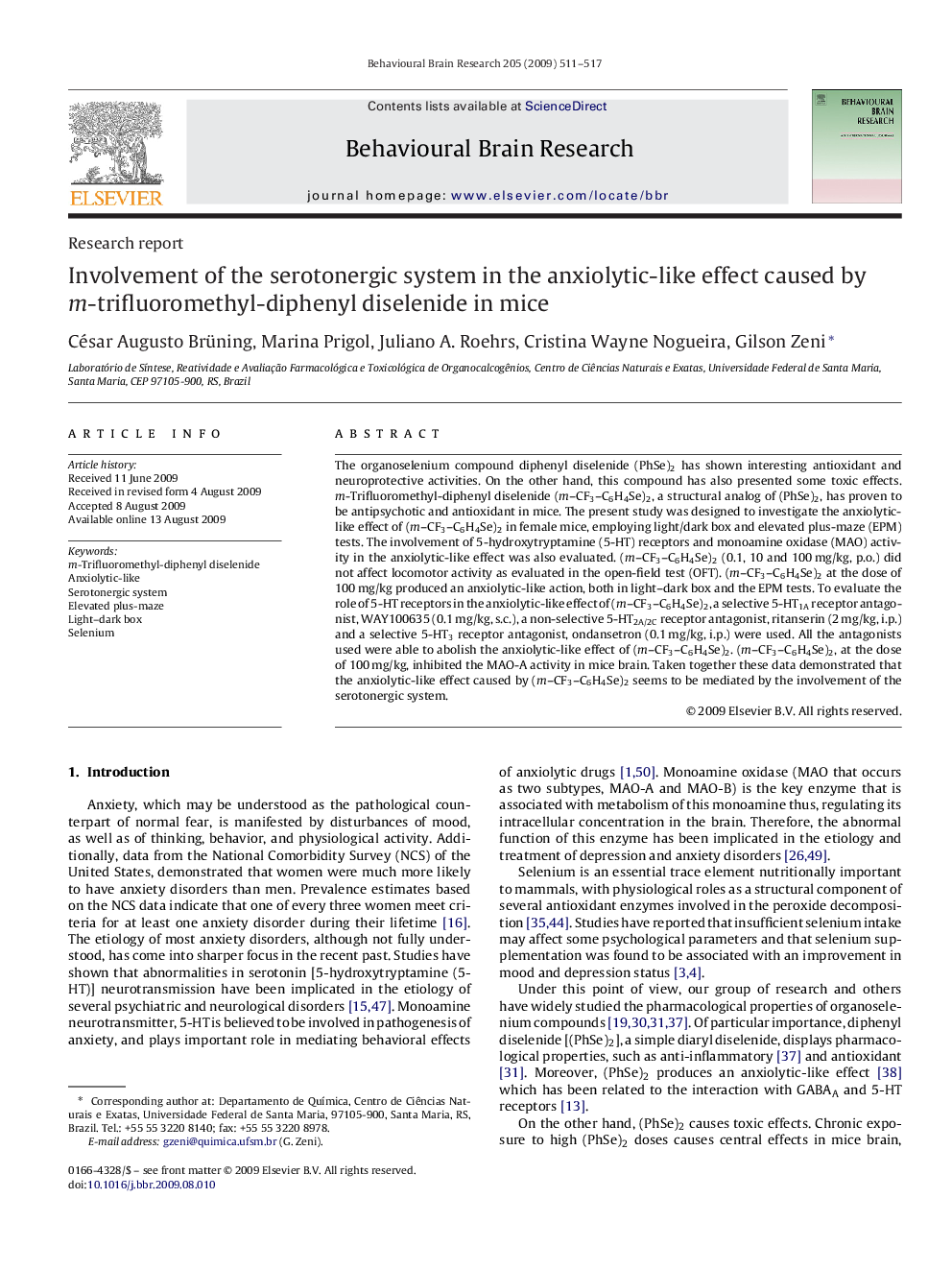| Article ID | Journal | Published Year | Pages | File Type |
|---|---|---|---|---|
| 4314426 | Behavioural Brain Research | 2009 | 7 Pages |
The organoselenium compound diphenyl diselenide (PhSe)2 has shown interesting antioxidant and neuroprotective activities. On the other hand, this compound has also presented some toxic effects. m-Trifluoromethyl-diphenyl diselenide (m–CF3–C6H4Se)2, a structural analog of (PhSe)2, has proven to be antipsychotic and antioxidant in mice. The present study was designed to investigate the anxiolytic-like effect of (m–CF3–C6H4Se)2 in female mice, employing light/dark box and elevated plus-maze (EPM) tests. The involvement of 5-hydroxytryptamine (5-HT) receptors and monoamine oxidase (MAO) activity in the anxiolytic-like effect was also evaluated. (m–CF3–C6H4Se)2 (0.1, 10 and 100 mg/kg, p.o.) did not affect locomotor activity as evaluated in the open-field test (OFT). (m–CF3–C6H4Se)2 at the dose of 100 mg/kg produced an anxiolytic-like action, both in light–dark box and the EPM tests. To evaluate the role of 5-HT receptors in the anxiolytic-like effect of (m–CF3–C6H4Se)2, a selective 5-HT1A receptor antagonist, WAY100635 (0.1 mg/kg, s.c.), a non-selective 5-HT2A/2C receptor antagonist, ritanserin (2 mg/kg, i.p.) and a selective 5-HT3 receptor antagonist, ondansetron (0.1 mg/kg, i.p.) were used. All the antagonists used were able to abolish the anxiolytic-like effect of (m–CF3–C6H4Se)2. (m–CF3–C6H4Se)2, at the dose of 100 mg/kg, inhibited the MAO-A activity in mice brain. Taken together these data demonstrated that the anxiolytic-like effect caused by (m–CF3–C6H4Se)2 seems to be mediated by the involvement of the serotonergic system.
